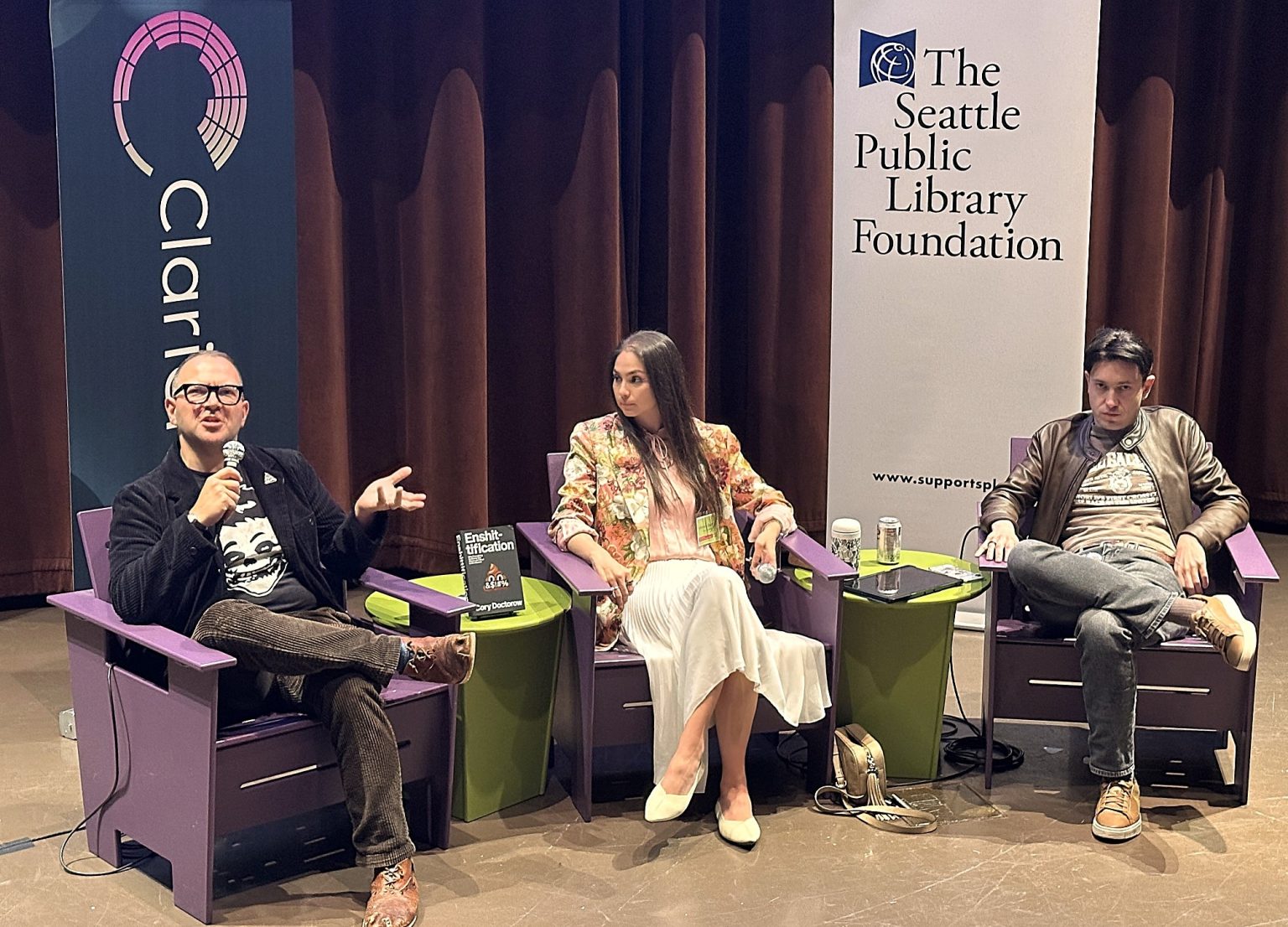The Impending AI Bubble Burst: Insights from Tech Critics Doctorow and Zitron
In a thought-provoking discussion at the Seattle Central Library, tech critics Cory Doctorow and Ed Zitron delivered a sobering assessment of artificial intelligence’s future, questioning the sustainability of the tens of billions invested in AI infrastructure. Doctorow, promoting his new book “Enshittification: Why Everything Suddenly Got Worse and What to Do About It,” joined forces with Zitron, a PR specialist and tech commentator known for his critical perspective on the industry. Together, they explored the concept of “enshittification”—the gradual deterioration of tech products and services as profit motives overtake user experience. Unlike tech leaders such as Microsoft’s Satya Nadella and Amazon’s Jeff Bezos, who acknowledge a potential AI retrenchment but predict an eventual resurgence with societal benefits, Doctorow and Zitron expressed deep skepticism about AI’s long-term viability. “This cannot succeed,” Zitron bluntly stated, pointing to both unprofitability and limited popularity among users. “ChatGPT is very popular because a lot of people love being driven insane,” he quipped, adding that despite the pressure to embrace AI, “The reason it’s not able to do your job is, it’s shit.”
Despite their shared prediction of an AI bubble burst, Doctorow and Zitron differed in their outlook for what comes after. Doctorow envisioned potential uses for the substantial investment in AI hardware, suggesting that a post-bubble landscape might feature dirt-cheap graphics processing units, unemployed statisticians looking for work, and barely optimized open-source models ripe for improvement. He imagined repurposing these resources for genuinely beneficial applications rather than writing them off entirely. Zitron took a darker view, expressing concern that unlike previous tech bubbles that at least left useful infrastructure in their wake, AI investments might prove completely worthless. “The thing that terrifies me about this bubble is, this is not useful infrastructure at all,” he warned, suggesting that AI technology might lack any significant salvage value after the market correction.
To counter the prevailing pessimism, Doctorow highlighted several practical AI applications that could survive the bubble. He described AI-enhanced search engines capable of scanning hours of podcast content to locate specific quotes and generate transcripts. He also pointed to AI models that support radiologists in cancer detection, serving as an additional layer of verification rather than replacing human expertise. Perhaps most compelling was his reference to the Human Rights Data Analysis Group’s collaboration with the Innocence Project New Orleans, where large language models identified linguistic patterns in arrest reports associated with eventual exonerations. This allowed legal teams to analyze far more cases than humanly possible, potentially accelerating the process of freeing wrongfully convicted individuals. These examples painted a picture of AI as an assistive tool that enhances human capabilities rather than the autonomous, job-displacing force often portrayed in industry marketing.
When pressed on timing, Zitron confidently predicted the AI bubble would burst “no later than Q3 2026,” while Doctorow was more circumspect. “I’m a firm believer that the market can remain irrational longer than you can remain solvent,” he cautioned, acknowledging the unpredictability of market corrections. Doctorow suggested that many of today’s foundation models might not survive the crash, though he left room for open-source models to persist if they attract sufficient community support. This distinction between proprietary and open-source AI technologies highlighted a key theme in their discussion: the tension between profit-driven development and community-oriented innovation. The suggestion seemed to be that AI’s most enduring applications might emerge from collaborative, non-commercial efforts rather than from venture-backed startups or tech giants seeking immediate returns on massive investments.
Amidst this technological forecast, both commentators offered pragmatic advice to tech workers facing industry uncertainty. “Now is the time to unionize,” Doctorow urged, acknowledging that recent political developments had created challenges for labor organizing but insisting that solidarity remained a powerful force. “When you fire the referee, it means there are no more rules,” he said, drawing an analogy to the weakening of labor protections. “There’s a reason that fascists attack unions first. It’s because the opposite of fascism is solidarity.” This framing placed technological disruption within a broader socio-political context, suggesting that collective action might be as important as technical skill in navigating industry transformations.
Perhaps most surprisingly, when asked what the next generation should study, neither tech pundit recommended computer science. “Finance,” Zitron advised, explaining that understanding money is fundamental despite seeming complex. “The world runs on money.” Doctorow shared advice he’d given his own daughter: “If you don’t know what you want to do at university, don’t go to university. Go to college and become an electrician.” He highlighted the abundant work opportunities for electricians, particularly with the ongoing shift toward renewable energy. “We are going to be solarizing for the next 40 years,” he noted, adding that the career offers both immediate employment and potential pathways to further education. “If you want to learn more, and you like it, you can become an electrical engineer. And if you don’t, you can put yourself through college by being an electrician—and learn finance.” This practical guidance reflected a broader skepticism about the tech industry’s promises and a recognition that traditional trades might offer more reliable livelihoods than chasing the next technological frontier.


